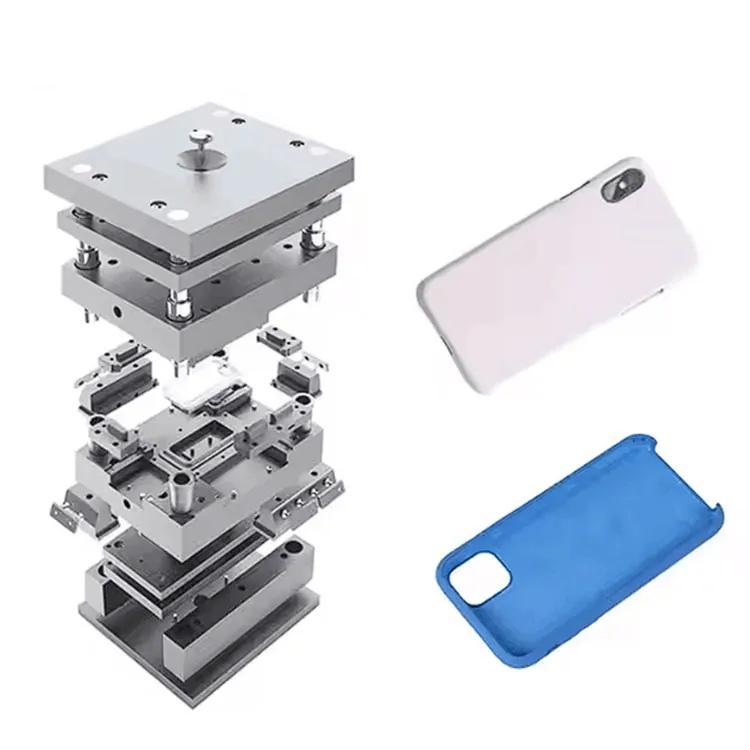Common Challenges in Phone Case Molding and How to Overcome Them
2024-11-15
The production of phone cases is a delicate process that requires precision, efficiency, and high-quality materials. One of the key factors that determine the overall quality of a phone case is the molding process. Whether using injection molding, compression molding, or other techniques, manufacturers face various challenges during the production of phone cases. These challenges can impact the final product’s appearance, functionality, and durability. In this blog, we will explore some of the most common issues encountered in the phone case molding process and suggest strategies for overcoming them.
1. Material Flow Issues: Uneven Filling and Air Traps
One of the most frequent challenges in phone case molding is material flow issues during the injection or compression molding process. When the molten material (usually plastic, silicone, or rubber) is injected into the mold, it must fill every cavity evenly. However, if the flow is uneven, it can lead to defects like short shots, incomplete filling, or air traps.
- Short shots occur when the material doesn’t fill the mold completely, leaving gaps or areas where the case is incomplete.
- Air traps happen when air is trapped in the mold, causing imperfections such as bubbles, voids, or wrinkles in the finished phone case.
Solutions:
- Optimize Mold Design: To address these issues, it's important to design molds with properly placed venting systems to allow air to escape and ensure smooth material flow.
- Adjusting Injection Parameters: The temperature, pressure, and speed of injection must be fine-tuned to ensure the material flows consistently and fills the mold evenly. A slower injection speed or lower pressure may help reduce air traps.
- Use of Proper Materials: Selecting the right grade of plastic or rubber that has a good flowability can significantly reduce the risk of material flow issues.
2. Surface Defects: Scratches, Streaks, and Surface Finish Inconsistencies
Another common issue in the phone case molding process is surface defects. These can include scratches, streaks, surface dullness, or even mold marks left on the final product. These imperfections are especially problematic for phone cases, which are highly visible and need to have a smooth, appealing finish.
Causes:
- Mold wear: Over time, the mold cavities may wear out, leading to rough surfaces that transfer imperfections to the phone case.
- Improper mold release: Using too much mold release agent or not applying it correctly can lead to uneven finishes or streaks on the surface.
- Contaminants: Dust, dirt, or even leftover material in the mold can cause surface marks on the phone case.
Solutions:
- Regular Mold Maintenance: Routine maintenance and cleaning of the molds will help keep the surface smooth and free of debris. Replacing worn or damaged molds will also prevent surface defects.
- Optimizing Mold Release: Using the right amount of mold release agent and applying it evenly ensures the phone case doesn’t develop streaks or marks. Testing different release agents can help find the one best suited for the material being used.
- Surface Treatment: After molding, phone cases can be polished, sanded, or coated to improve surface appearance. Laser engraving or coating techniques can also provide a high-quality finish without compromising mold integrity.
3. Warping and Deformation
After molding, some phone cases can experience warping or deformation, especially if the material cools too quickly or unevenly. This can result in a warped or bent shape that affects both the fit of the phone case on the device and its aesthetic appeal.
Causes:
- Uneven Cooling: If certain areas of the phone case cool faster than others, this can create internal stresses that lead to warping.
- Excessive Shrinkage: Certain materials shrink more than others as they cool, causing the case to deform.
Solutions:
- Cooling System Optimization: Improving the cooling system of the mold helps to ensure that the material cools evenly. This may involve using cooling channels and adjusting the temperature settings to allow for a more consistent cooling rate.
- Material Selection: Some materials are more prone to warping than others. Choosing low-shrinkage materials can reduce the likelihood of deformation.
- Post-Molding Treatment: Some warping can be corrected after molding through heat treatment or re-heating the case and pressing it into shape while cooling.
4. Poor Tolerance and Fit
A phone case needs to be a perfect fit to function properly. A tight fit ensures that buttons, ports, and camera cutouts align correctly, while a loose fit can compromise the phone case’s protection. During molding of phone case, achieving the proper tolerance is critical for ensuring the right dimensions of the final product.
Causes:
- Mold Design Errors: Inaccuracies in mold cavity design or mold wear can result in slight dimensional inconsistencies.
- Material Shrinkage: Different materials have varying levels of shrinkage during cooling, which can impact the final dimensions of the phone case.
Solutions:
- Precise Mold Design: A well-designed mold that accounts for material shrinkage and precise dimensions is essential for producing high-quality phone cases. Using CNC-machined molds allows for better control over the final product’s tolerances.
- Test Runs and Adjustments: Conducting multiple test runs before full production helps identify dimensional problems early on. Adjusting the mold or injection parameters during testing can ensure the correct fit.



